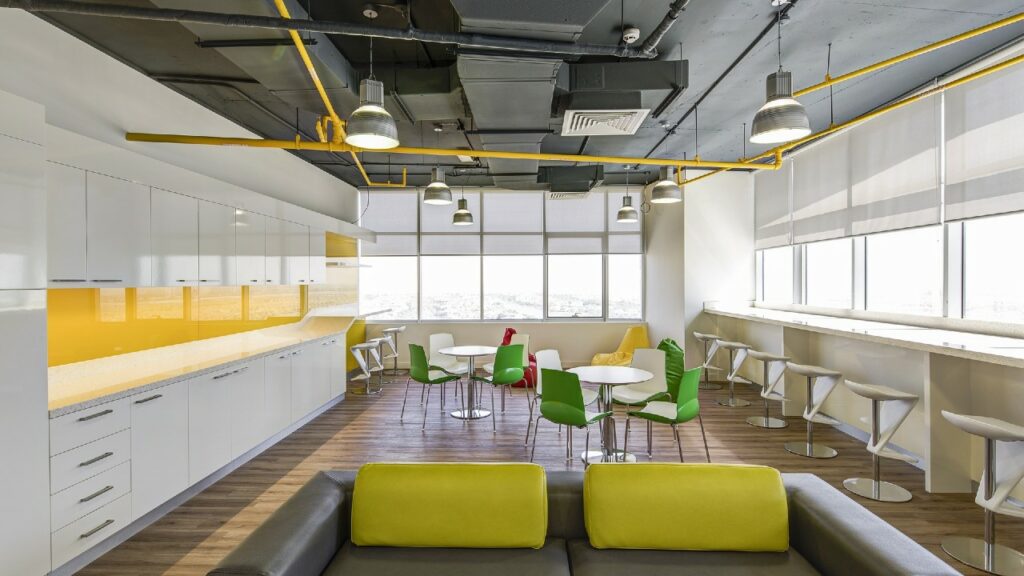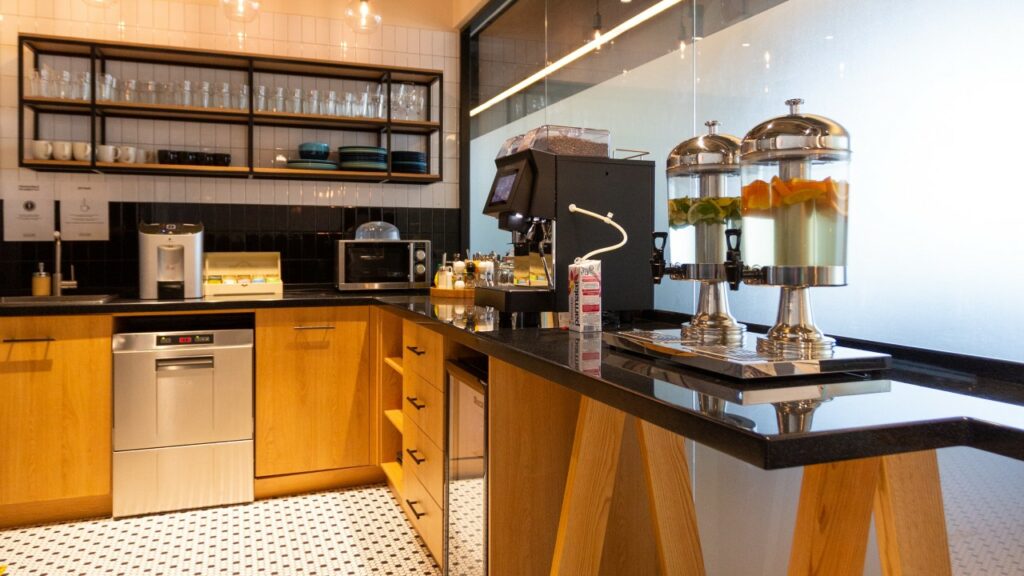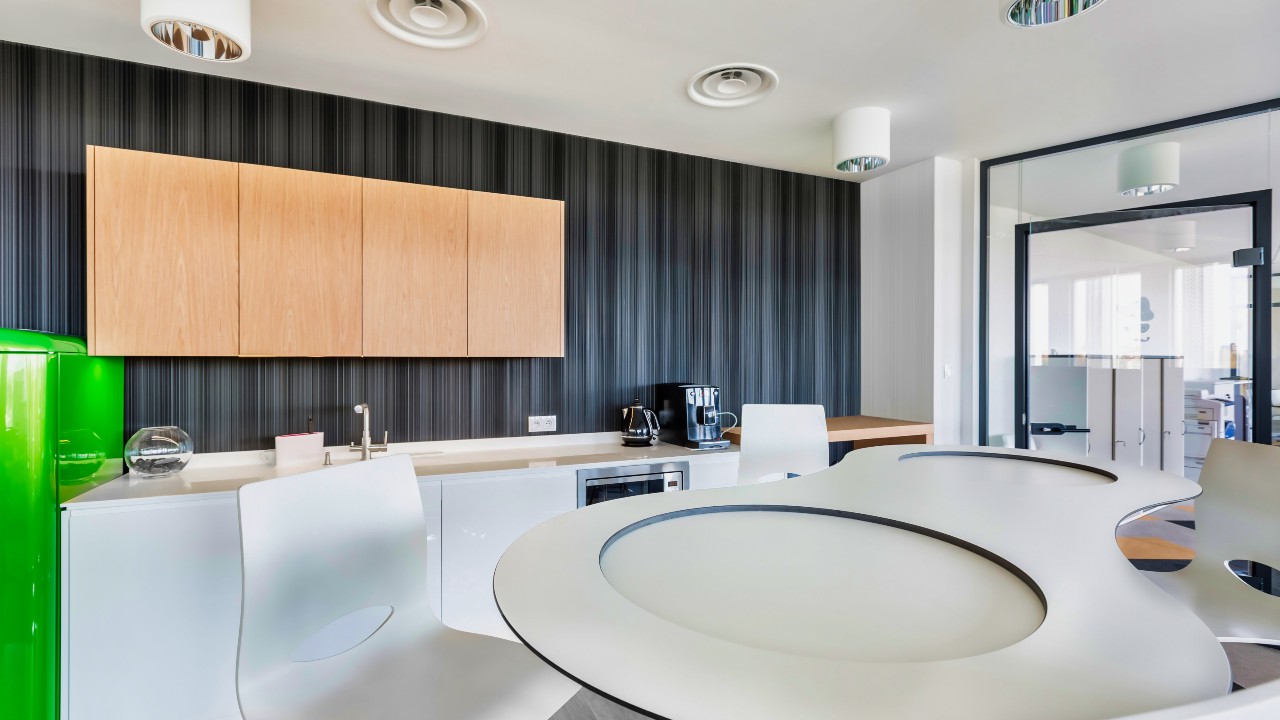The kitchen, which is at the heart of every home, is now also one of the most significant places in the workplace. It’s a place where employees may recharge their batteries, meet colleagues from different departments, chat, and network. The kitchen is becoming increasingly significant in modern office spaces, and while being one of the most frequently visited areas, organizations are just now discovering how to fully utilize its potential.
Kitchens are often associated with comforting warmth, cosiness, delicious cuisine, enticing aromas, and a welcoming ambience. The area at an office has three main functions: first, it is a place where people eat (and sometimes even make) meals, second, it is a place of regeneration and rest, and third, it is a place where workers interact with their coworkers.
Because we spend at least eight hours a day at work, it’s critical that employees may take their meals in privacy and comfort. After all, one of man’s basic necessities is to provide his body with the proper nourishment. Therefore, an office kitchen can have an immensely positive impact on employee wellbeing – it is a great place to relax, unwind, de-stress, and regenerate after a long day at work. Over a cup of coffee, workers gather, speak, and exchange expertise. This method of sharing knowledge pulls the team together and integrates it, making future collaboration easier.
According to research, 70 percent of employee contacts take place outside of meeting rooms. Interiors that are cosy and warm are considerably more pleasurable to work in and stay in. The correct environment is created by stimulating the sense of taste in distinct locations, which helps one regenerate and relax.
The Kitchen Design

Because the kitchen’s importance is growing, it’s no surprise that more attention is being devoted to its design. It must entice users to stay, and it must be pleasant and evocative, similar to a popular cafe. As a result, intriguing patterns, varying colours, diverse material textures, and innovative solutions are increasingly being used to provide employees with a moment of relaxation and a break from work-related matters. You can check out kitchen designs at JD Kitchens to see what a contemporary office kitchen should look like.
Furthermore, as offices began to grow and transform at a rapid rate, it was recognized that the task of planning the look of an office and its furniture should not be left to the administration or purchasing department, but rather should be entrusted to workplace industry professionals such as architects, consultants, and product experts. When designing a kitchen, these larger groups ensure that it fulfils the three functions listed above.
Creating a large, versatile kitchen to service all staff is a significant investment problem, according to experts. They emphasize that the end-user and their comfort level while in the area must always be considered.
Making employees a part of the design process makes it easier to discover flaws while also improving their identification with and responsibility for the workplace, as well as their dedication to the company’s life.
Building a new office kitchen is a big endeavour, so you might be thinking how commercial property insurance plays into this. And if you don’t have any type of business insurance at all, check out our post on choosing an insurance broker.
A Canteen, Kitchen, or Coffee Point?

The current architectural styles, which take inspiration from home or café decor, have given workplace kitchens new purposes and forms. We can divide kitchen spaces into three categories: coffee stops, kitchens, and canteens. These are small kitchenettes where guests can get coffee, tea, and refreshments, sometimes with a small table for quick talks; they are frequently strewn across different parts of the office.
Different types of kitchens regularly coexist in one workplace: corporations frequently prefer to have their own, even small kitchen as well as numerous coffee points spread around the office, in addition to a publicly accessible cafeteria on the ground floor.
Is There Such a Thing as a Perfect Kitchen?
There is no one-size-fits-all recipe for a decent kitchen. Its size, furniture, and style are all determined by a variety of criteria, the most important of which are the unique needs of the organisation.
The space available and the number of employees in the workplace are the most important factors to consider when arranging and setting out a kitchen. With these two variables in mind, consider things like appropriate equipment (dishes, fridges, coffee makers), consumables (kitchen towels, fruit, snacks, coffee), furniture (sofas, armchairs, coffee tables), acoustic solutions (soft seating, panels), and plants (they help you to relax your eyes when you are working behind a computer all day long).
Because the operation of a kitchen is primarily dictated by smart and intelligent design, you should spend some time planning a new office with an architect to come up with a practical and customized concept for the area.
If you are looking to ramp up your marketing efforts as well, check out our post on designing vinyl banners.
